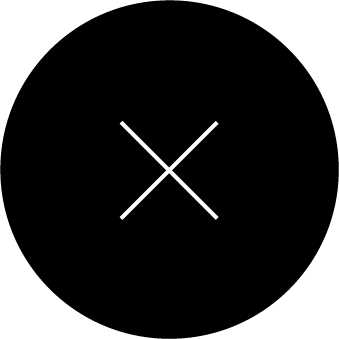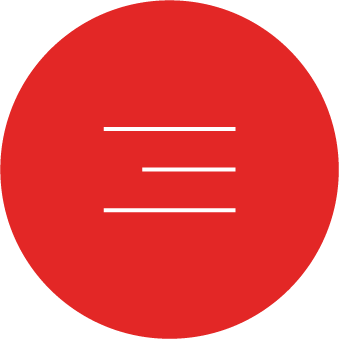Our Guide to LinkedIn B2B Lead Generation Campaigns that Convert

In Q4 2019, we drove 20 highly qualified niche leads to a newly launched brand, each of which represented a potential multimillion-dollar deal. How? Expertly crafted and managed LinkedIn B2B lead generation campaigns.
In 2017, B2B marketers reported that 80% of their social media leads came from LinkedIn. With over 260 million users, LinkedIn is one of the best social media platforms to drive new business prospects through B2B lead generation.
Related: Expand your social media strategy to include highly relevant niche social media platforms.
As with all social media advertising platforms nowadays, LinkedIn is stacked with options that can be overwhelming for brands. Here’s my quick walk-through of the options and which parts to focus on for your LinkedIn B2B lead generation campaigns.
Setting a Campaign Objective
When you create a new campaign in LinkedIn’s advertising platform, you’ll see a screen that asks you what your ultimate objective is. I love the way LinkedIn breaks down the objectives by stages in the sales funnel: awareness, consideration, conversion.
For B2B lead generation campaigns, there are two main objectives:
1. Lead Generation: Capture leads on LinkedIn using a lead generation form pre-filled with LinkedIn profile data.
2. Website Conversions: Capture leads through your website by setting up conversion actions.
The “lead generation” option may seem like the obvious choice, and it does tend to have higher conversion rates overall. However, I recommend utilizing the “website conversions” option so you can:
- Keep all your leads in one central database (your CRM), and maintain consistency across all captured lead fields.
- Drive traffic to your website, encouraging potential leads to learn more about you.
- Track conversions consistently across various channels for analysis in Google Analytics.
Targeting the Right Audience
You’ve identified the what: conversions. Now it’s time to identify the who: your target audience (of at least 300 people). LinkedIn offers a wide breadth of B2B targeting options that can help you reach the right people. Here’s a list of available targeting options with my two cents on each:
- Geography (required): The only required field on LinkedIn, you can use location targeting as widely as entire countries and as granularly as one city. One of my favorite features on LinkedIn location targeting is using “metropolitan area” options.
- Company: Company targeting features include 1st-degree connections of employees, company industry, company size, company name, and your own company followers. For LinkedIn B2B lead generation campaigns, I recommend focusing on company industry, size, and/or name.
- Demographic: Member age and gender are the only demographic options on LinkedIn targeting. I wouldn’t recommend targeting these options unless your business was age or gender specific in offering.
- Education: From field-of-study to school and degrees, these targeting options are particularly useful for recruiting ads for new employees or students. Higher education industry, take note!
- Job experience: Job function, seniority, title, member skills, and years of experience are all excellent options in this section of LinkedIn audience targeting. For B2B lead generation ads, I rely primarily on job function, seniority, and title among desired audiences and decision-makers in their companies.
- Interests: LinkedIn also allows you to target people by their group memberships and inferred interests. I don’t always use these options for lead generation campaigns, but they can be helpful for content amplification, event marketing, or brand awareness.
Keep in mind: LinkedIn requires a minimum of 300,000 in your audience for Sponsored Content, so limit your targeting options to about 3-4 main areas of focus.
When it comes to protecting your investment, I recommend unselecting the auto-checked boxes for audience expansion and the LinkedIn Audience Network — leaving them on can burn through your budget under the guise of optimizing your campaign. You should also set daily and lifetime budgets and start/end dates to your campaigns to protect you from the costly “set it and forget it” mentality.
Finally, the default bid type is an “automated bid” which allows LinkedIn to set the CPC bid for your ads. I recommend keeping this bid type when testing and optimizing campaigns.
Once you know the value your company places on a click, you can move on to the more advanced bid type of “Enhanced CPC.” (The only other bid type available is “Maximum CPM,” which I never recommend, as impressions are the bane of my existence and the biggest waste of a metric that ever existed.)
Creating Ads that Convert
The “who” and “what” are accounted for. Finally, it’s time to create the “how” of it all: ads!
LinkedIn supports six ad formats: message, video, text, spotlight/dynamic, sponsored content/single image, and carousel. The last two types are my recommended formats for LinkedIn B2B lead generation.
Here are my tried-and-true tips for sponsored content, also referred to as “single image ads,” and best practices for the up-and-comer carousel format.
For sponsored content ads:
- Keep copy short. LinkedIn recommends keeping headlines under 150 characters and descriptive copy under 70 characters.
- Write for your audience, not yourself. Focus your messaging on the benefits they can reap, its impact on their job, or their specific pain points.
- Upload colorful, custom graphics (1200 x 627 pixels is recommended). Content with larger visuals tend to get up to 38% higher CTR.
- Feature a clear, strong, and actionable CTA. Use phrases like “try,” “download,” “sign up,” and “request a quote.”
Carousel ads are a newer LinkedIn ad format but have seen success in the B2C space on Facebook and Instagram. To leverage these ad types for LinkedIn B2B lead generation, LinkedIn recommends:
- Showcasing multiple offerings or featuring a single product or service in depth.
- Packaging content with similar themes together or deconstructing a large piece of content into carousel cards.
- Starting with 3-5 cards in your carousel, and test adding more cards from there.
Test, Report, Optimize, Repeat
From campaign objective, to audience targeting, to ad creation, test independent variables for at least 3 months to see what’s converting (and what’s not). Do this successfully for LinkedIn B2B lead generation campaigns by using these guidelines:
- Create 2 to 4 ad variations within each campaign. Understand independent variables so you can draw true conclusions to your tests. Test audiences, ad copy, or ad imagery, but not all at once. Give yourself (and your ads) time to tell you what’s working and what’s not before changing variables.
Pro tip: Test your audience first. Once you know who to target, you can better determine how to get them to convert. Then test ad copy or imagery. Finally, test landing pages.
- Monitor CTR and refresh ads at least once a month. Every 1-2 weeks, pause the ad with the lowest engagement and replace it with new ad creative. Over time, this will improve your ad relevance score, which will help you win more bids.
Now that I’ve armed you with my go-to tools for LinkedIn B2B lead generation campaigns, happy converting! And if you want me to manage the campaigns for you, contact D Custom.


